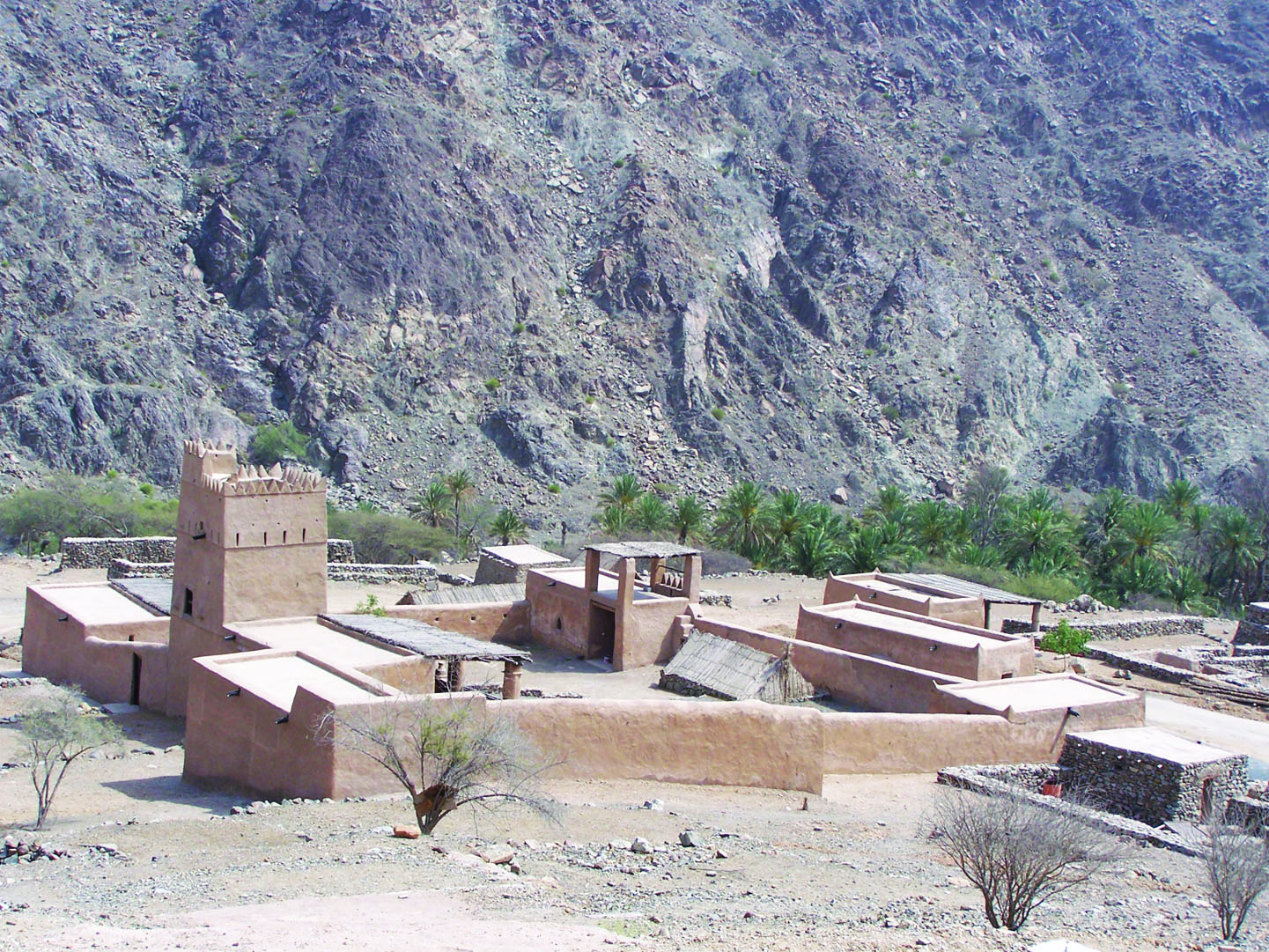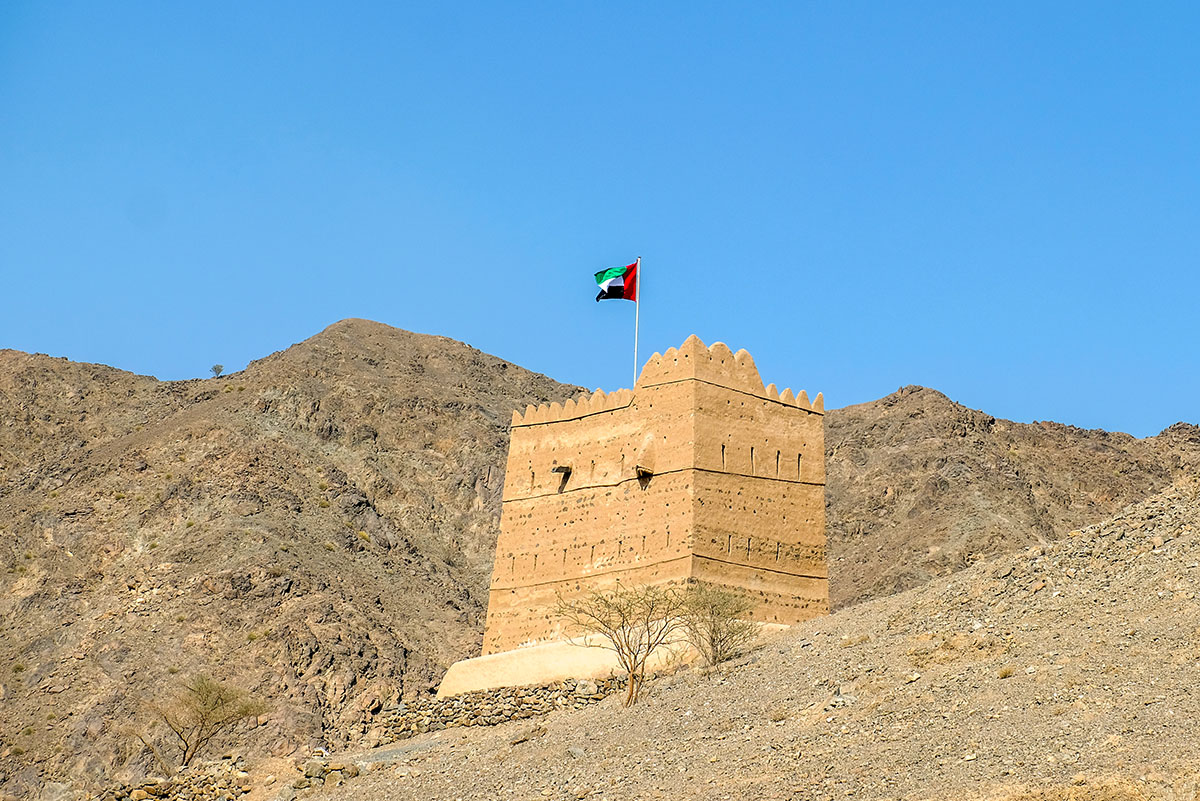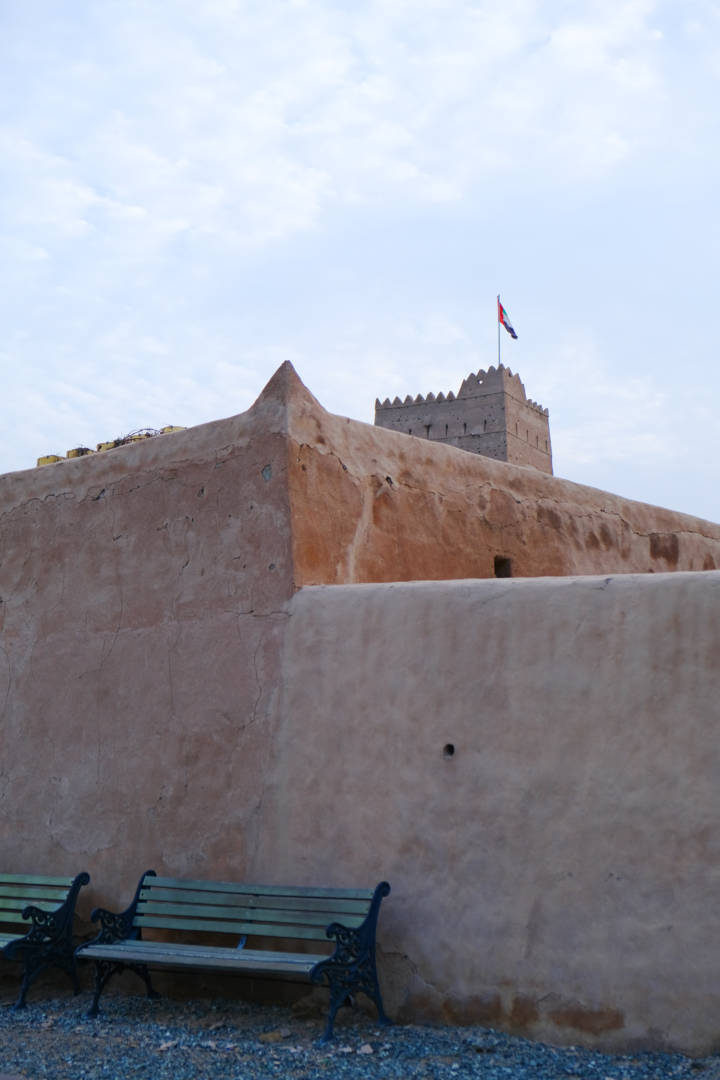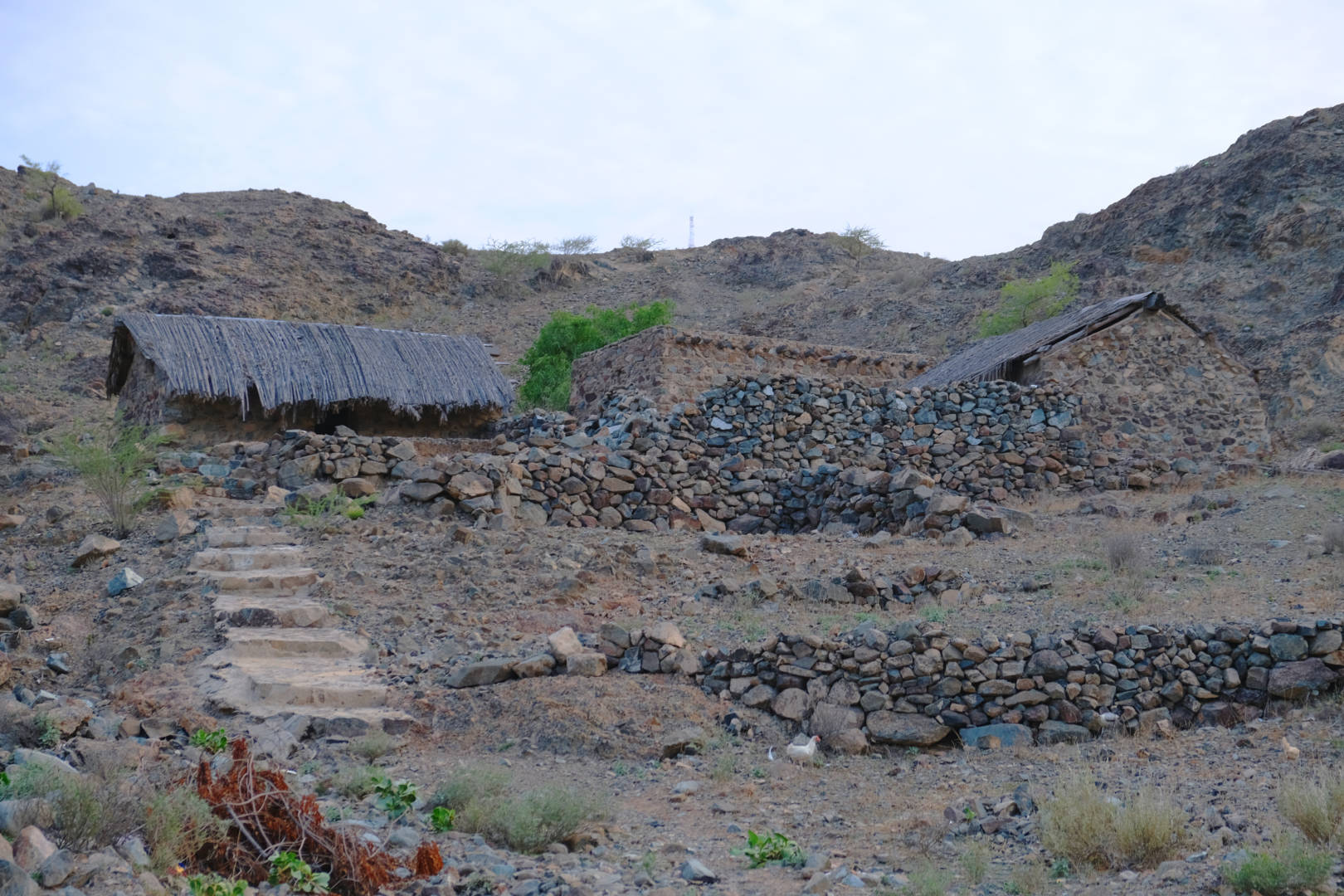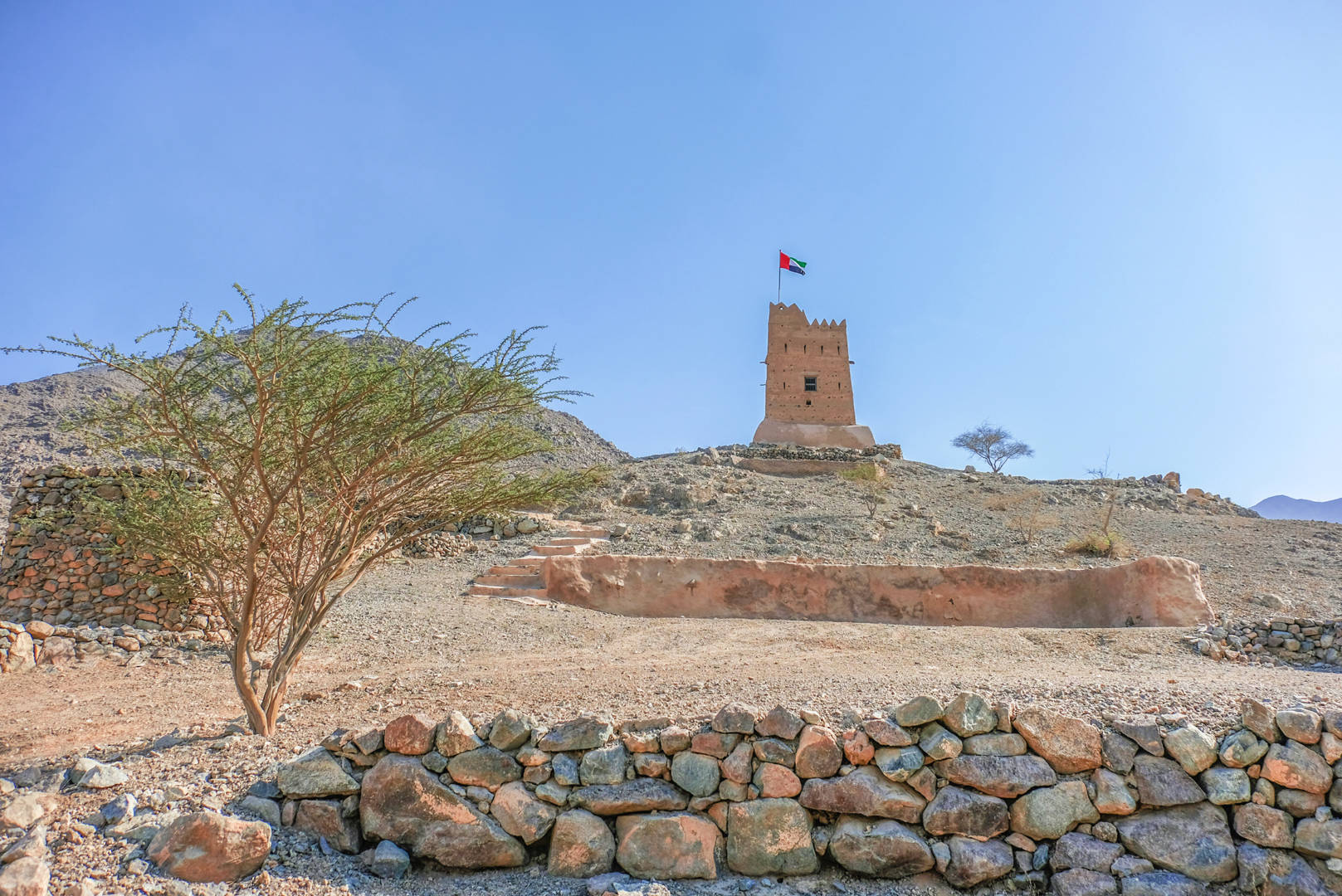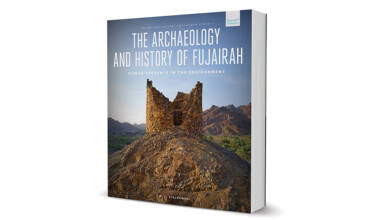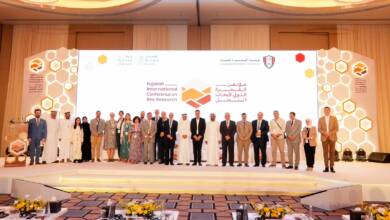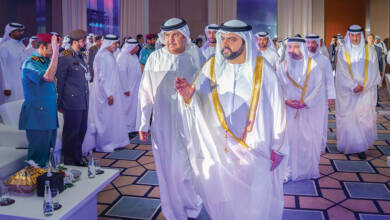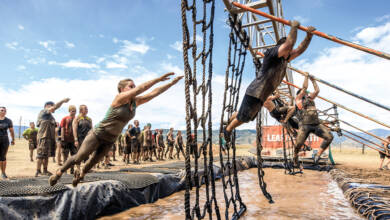Al Hayl Fortress is strategically situated on a prominent rise overlooking the surrounding village and wadi.
According to local sources, the fortified courtyard house, mosque, majlis and watchtower were constructed around 1932. Bin Shimal, a local family living in Kalba and Fujairah, constructed houses in the area, including much of the house at al-Hayl. A second builder by the name of bin Shambi also worked on the main house and the watchtower on the hill.
Prior to the construction of Sheikh Abdullah’s house at al-Hayl, he resided in the large fortified courtyard house of his father, Sheikh Hamdan bin Suroor al-Sharqi, situated below Fujairah fort. The gabbro/dolerite rocks used in the construction of the courtyard house, mosque, majlis and watchtower at al-Hayl were all locally sourced.
Saruj was used on buildings at the site as mortar and plaster. Saruj plaster on the external walls was placed in layers, each layer ending with a small upward curvature. This was done so that any rain falling on the building would be diverted away from the foundations.
A soft mudbased mortar was also used to bind the rocks throughout parts of the construction. This soft mud mortar is also found on various walls, as a layer of plaster below the saruj or the gypsum. A fine and smooth gypsum plaster was used on many of the interior walls in the courtyard house. Mangrove (Avicennia marina) poles used in the construction were either traded from East Africa (Unwin 1988: 155), and/or locally sourced from the Khor Kalba area.
Unidentified planks of hardwood were also used throughout the buildings. Date palm trunks, branches, stems and leaves were used extensively throughout all of the buildings in Wadi al-Hayl. Date palm tree fibre was also used to create ropes, which were used in the building construction. Lastly, cement was also added to the construction of certain buildings at the site.
The khaymah type rooms located within the courtyard house were semi-subterranean in nature. The walls were built with mountain rocks bound with a soft mud mortar and rubble fill. They contained pitched roofs constructed with wooden poles, which were covered with date palm branches.
 The Watchtower The watchtower located on the hill behind the courtyard house, to the south southwest, was originally built for Sheikh Abdullah’s younger brother, Sheikh Suhail. Sheikh Suhail also resided in two khaymah type houses positioned directly below the watchtower.
The Watchtower The watchtower located on the hill behind the courtyard house, to the south southwest, was originally built for Sheikh Abdullah’s younger brother, Sheikh Suhail. Sheikh Suhail also resided in two khaymah type houses positioned directly below the watchtower.
The cleared and levelled area supported by a rockbuilt embankment located directly to the south of the watchtower was used to house camels during the night. The fortified courtyard house and settlement in Wadi al-Hayl is reflective of a traditional mountain village in this region.
Edited Sources: Michele C. Ziolkowski & Abdullah Suhail al-Sharqi Tribulus Journal – Emirates Natural History Group
Article published by Fujairah Observer Magazine.
To read the online magazine please click on the link below:
https://www.fujairahobserver.com/wp-content/uploads/2019/11/NO19-1.pdf

